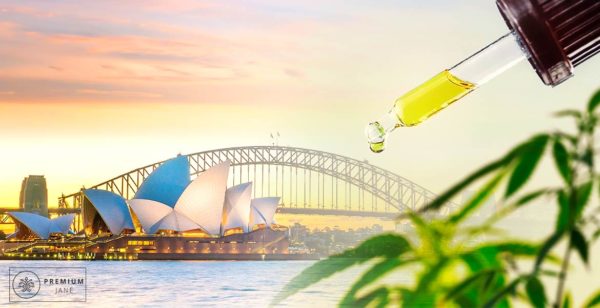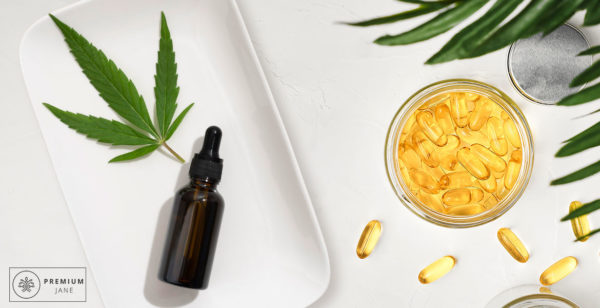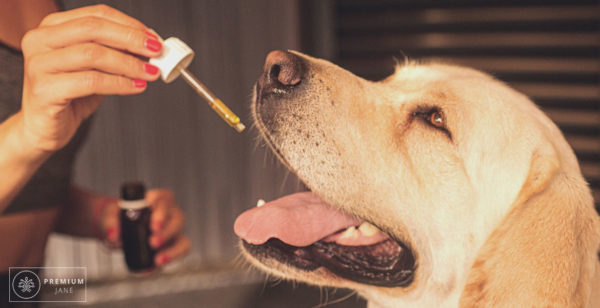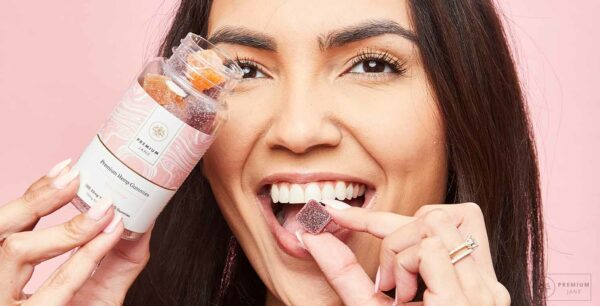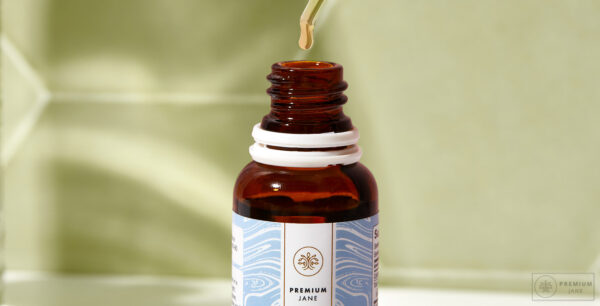Modern Hemp Uses: The Glorious Return of an Incredible Plant

Humankind has cultivated and used hemp for millennia. Indeed, there is archaeological evidence that we’ve used the hemp plant for at least 10,000 years! The ancient Chinese used the plant to produce paper and also for medicinal purposes. We have grown, extracted, manipulated, and utilized hemp throughout the centuries for almost every civilized need imaginable.
Estimates vary, but it’s believed that there are over 50,000 hemp uses! Some of the most relevant include the creation of housing and clothing. Furthermore, the staggering nutritional profile of the plant means humans have used it as food.
Today, modern phytochemical extraction technologies have expanded the use of hemp in people’s health, wellness, and beauty regimes. In addition to its traditional uses (which we’ll talk more about below), people use powerful hemp extract to quell aching joints, calm down after a stressful day, and rejuvenate the skin to look years (if not decades) younger.
With hemp and hemp extract now fully legal across Australia, people are becoming increasingly interested in the modern benefits and uses of hemp and hemp oil extract.
Keep reading to find out more…
Parts of the Hemp Plant: Unique Attributes and Uses Abound
One of the reasons why the hemp plant is so versatile is because its many different parts all have viable uses. Before we delve into some of the thousands of ways you can use hemp, let’s check out its different parts and analyse their utility.
- Stem: The hemp plant’s stem includes bast and wood tissue. Both have moisture-absorbing properties and are naturally breathable. You can use bast tissue for making textiles, felt, and rope. Meanwhile, you can use wood tissue as an eco-friendly construction material.
- Seeds: The seeds contain high levels of fibre, protein, and essential fatty acids. You can consume them whole, although many hemp seed oil products are on the market.
- Leaves and Flowers: These components contain a high level of cannabinoids, which are extracted and sold as hemp oils, tinctures, and other products. A growing number of people see the value of using high-cannabinoid oil to help manage the symptoms of various health issues.
- Fibre: Hemp fibre is exceptionally versatile and stronger than people realize. It creates clothing, rope, paper, bioplastics, and biofuel.
- Roots: The hemp plant’s roots are often used in phytoremediation, a crucial process that involves eliminating toxins from contaminated soil. Some claim that the plant’s roots help with respiratory and digestive problems.
What Hemp Can Be Used For
As we explored earlier, there are potentially 50,000 uses for hemp, and we currently avail of a tiny fraction of that number!
Much of hemp’s popularity throughout human civilization can be attributed to how the plant grows. Both today and thousands of years ago, farmers choose to grow hemp not only because it’s relatively easy to cultivate, but because it grows fast, naturally purifies the soil, and produces high yields with little maintenance.
Today, China produces a significant majority of the world’s hemp. Research from New Frontier Data suggests that two Chinese provinces, Yunnan and Heilongjiang, produce approximately 70% of the world’s hemp. France is the next biggest hemp grower and the biggest European cultivator.
However, the crop is grown in some capacity in nearly every country. Even today, manufacturers use hemp to make clothes, construct homes, build car parts, and even fuel commercial and agricultural vehicles.
More importantly, thanks to increased medical studies (as well as clever marketing), hemp has become a highly sought-after health and wellness product. Reducing stress, managing sore muscles, soothing aching joints, and hydrating dry skin are just some reasons why people use hemp products as part of their daily wellness regimen.
Towards the end of the article, we’ll talk about the powerful health and cosmetic uses of hemp, but first, let’s take a look at some fascinating ways people are still using the hemp plant, even to this day.
Plastic
With 8 million pieces of plastic entering our oceans daily, finding a natural, biodegradable alternative to plastic will be imperative in the coming years and decades. Hemp plastics (known as bio composites) are far more sustainable than petroleum-based plastic and are becoming increasingly used in various manufacturing sectors. Even car manufacturing giants like BMW and Honda use hemp plastic to craft interior car panels from biodegradable plastic moulds.
Fuel
Believe it or not, it is possible to create hemp biofuel by extracting the natural oils found in the stalk and seeds of the plant. Known as hempoline, hemp fuel is used to power diesel engines. It could be a valuable, sustainable alternative to non-sustainable hydrocarbons (i.e., petroleum, coal, and natural gas) that contribute to climate change.
Wellness and Cosmetics
Perhaps hemp’s most important modern-day use is as a health and beauty product. Thanks to radical advancements in solventless extraction technology, pioneering hemp companies (like us here at Premium Jane) can now cleanly extract micro-compounds found in hemp and use them in various health, wellness, and age-defying beauty products.
Among other things, the micro-compounds (such as cannabinoids and phenols) in hemp have been shown to possess immense therapeutic properties that can work wonders on things like aching joints and sore muscles. Some of the top athletes in the world are turning to hemp-derived, cannabinoid-rich topicals (like our powerful 1,500mg topical formula) to help speed up recovery after an intense workout.
Raw hemp-derived oils are also being increasingly used for their ability to help relax the nervous system and ease feelings of stress and anxiety. By interacting with stress response pathways in the body’s endocannabinoid system, powerful hemp extracts, like our organic 1,000mg full-spectrum tincture, are a valuable addition to people’s daily wellness routines.
Last but not least, the compounds in hemp extract have been shown to possess extraordinary age-defying effects on the skin. By helping reduce oxidation and eliminating damaging free radicals from superficial layers of the skin, cannabinoid-rich cosmetic products can help you look years younger. They can also work to rejuvenate skin cells to produce a luscious, hydrated, youthful shine.
Ropes and Sails
Throughout the ages, hemp has proven instrumental in the shipbuilding industry. The plant’s fibres are extremely strong and flexible, which is ideal for ropes and sails. The plant’s fibres can stretch without breaking, so hemp rope is known for its exceptional durability.
It was common to see hemp fibre sails on ships at one time. This is no surprise since the fibres naturally resist UV rays, rot, and water. Since they are also lightweight, they are uniquely suited to the rigors of sailing. Furthermore, you can treat hemp fibres to become fire-resistant, which is certainly a big help!
Food
Hemp has also been used for thousands of years for its robust nutritional value. Most of hemp’s nutritional value comes from the plant’s seeds, which are full of amino acids (protein) and high-quality omega fatty acids. When hulled and crushed, hemp seeds have a mild, nutty flavour, making them popular as a salad or oatmeal topper.
Not only are hemp seeds a complete protein (they contain all nine amino acids), but they’re also a good source of fibre and essential fatty acids. Two primary fatty acids in hemp are omega-3 and omega-6, which have been linked to improved heart health.
Animal Feed and Mulch
As we explored above, hemp seeds have an exceptional nutritional profile, so farmers add them to animal feed. The fatty acids found in the seeds are essential for the healthy growth of animals. You can feed hemp seeds whole to ducks, chickens, or other poultry. Furthermore, you can grind them into a meal and add them to livestock feed or create hemp seed cakes for easy consumption.
Hemp’s deep roots retain moisture in the soil and hinder weed growth, making the plant a great option as a mulch. Hemp mulch could decrease water evaporation and regulate soil temperature. As hemp is a fast-growing plant that needs minimal pesticides and little water, it is an environmentally-friendly alternative to typical mulch.
Construction
Given its immense tensile strength (which rivals steel), hemp can also be used as a versatile building material. For construction applications, hemp fibre is combined with limestone and water to create a substance known as hempcrete. While hempcrete isn’t quite as strong as brick or steel, it can still be used to construct carbon-neutral homes and other buildings.
One innovator, Charles Rasetti, proved this back in 1986. He used 100% hempcrete to renovate a building in France (the Maison de la Turquie), showcasing for the first time the sweeping potential of hempcrete for use in construction applications. Hemp can also be a useful substitute for wood and as an internal plaster because of its insulating quality. Several research projects are currently underway to investigate how bio composite materials, like hemp-line panels, can be utilized in everyday builds.
Agriculture
Apart from being used to feed animals and help the soil, hemp has a variety of other agricultural uses. As I mentioned earlier, the plant’s ability to filter toxic substances from the soil is a huge benefit. Farmers can effectively ‘clean’ the soil with hemp and then grow more hemp (or other crops) on the fresh soil.
As well as cleansing soil, hemp can increase soil fertility in rotary farming. Hemp roots produce compounds that increase soil microbial heterogeneity, resulting in better soil health. Also, hemp produces large amounts of biomass. This biomass goes back to the soil, where it decomposes, a process that returns certain nutrients. Therefore, the crops grown in the adjacent field also benefit when you harvest hemp.
Hemp grows extremely quickly compared to many other plants, an advantage that could massively help the environment. One ton of hemp can pull over 1.5 tons of carbon dioxide out of the atmosphere! For reference, a standard 22 MPG gas-based car emits that amount of CO2 for every 3,750 miles you drive!
Paper
It is believed that a Chinese court official named Cai Lun invented hemp paper approximately 2,000 years ago. The process of creating paper from hemp moved to Korea and Japan by the sixth century AD. Eventually, by the 1200s, Europeans used hemp instead of wood in paper making, and the process remained in favour for centuries.
Hopefully, hemp paper will make a return because it is more durable and longer-lasting than paper made from trees. It is also more cost-efficient and better for the environment. Did you know that a hectare of hemp can produce as much paper as up to 10 hectares of trees in a two-decade period?
Hemp Clothing
Utilizing hemp as a textile is arguably one of the oldest uses of the plant. To create hemp fabric, tiny fibres are pulled from the plant’s stalk through a process known as ‘retting.’ These fibres are then spun together into one long, continuous strand before they’re woven into a fabric.
In terms of texture, hemp fabric resembles linen, albeit more robust and durable. Several boutique, sustainably-minded brands stock 100% hemp-made clothes, including shirts, pants, socks, and even shoes. Perhaps hemp clothing in Australia will take off, adding another string to this remarkable plant’s bow.
Summary of Hemp Uses
Over the years, people have invented and discovered ingenious uses for hemp in everyday life. While some of these ideas, like hemp biofuel, may not yet be practical on a large scale, other inventions, like hempcrete, could be vital for a modern and eco-friendly future.
Most importantly, the powerful therapeutic potential of hemp is starting to change how Australians approach their daily health, wellness, and beauty routines. Products like broad-spectrum hemp oils are showcasing immense therapeutic benefits, and they’re becoming increasingly sought after, thanks to the full accessibility of hemp-derived products here in Australia.
If you feel inspired to try some of the finest quality hemp products, shop our classic collection here at Premium Jane. You can find a variety of hemp-infused oils, capsules, topicals, gummies, and more – all of which are formulated using solventless extraction technologies and sourced from the purest, highest-quality hemp on the planet. Our products are one of the many uses of hemp, a plant with enormous potential.

